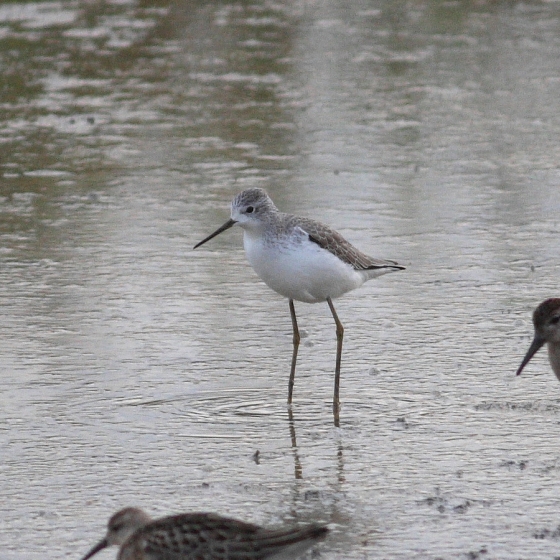Marsh Sandpiper

Introduction
A slender wader with a needle-thin bill, the Marsh Sandpiper is a bit smaller than a Redshank and breeds on the Russian steppe. It is a rare, but annual, visitor to our shores, with records peaking in late summer (July/August).

Key Stats
Status and Trends
Conservation Status
Population Size
Population Change
Population trends of this scarce species are not routinely monitored.
Distribution
This species is a rare vagrant and was recorded during Bird Atlas 2007–11 as shown on the map.
or view it on Bird Atlas Mapstore.
European Distribution Map
Distribution Change
This vagrant is too rarely reported to map distribution change.
Seasonality
Marsh Sandpiper is a very rare vagrant, recorded sporadically through spring and autumn.
Weekly pattern of occurrence
The graph shows when the species is present in the UK, with taller bars indicating a higher likelihood of encountering the species in appropriate regions and habitats.

Movement
Britain & Ireland movement
Biology
Survival and Longevity
Survival is shown as the proportion of birds surviving from one year to the next and is derived from bird ringing data. It can also be used to estimate how long birds typically live.
Classification, names and codes
Classification and Codes
- Order: Charadriiformes
- Family: Scolopacidae
- Scientific name: Tringa stagnatilis
- Authority: Bechstein, 1803
- BTO 2-letter code: MD
- BTO 5-letter code: MARSA
- Euring code number: 5470
Alternate species names
- Catalan: siseta comuna
- Czech: vodouš štíhlý
- Danish: Damklire
- Dutch: Poelruiter
- Estonian: lammitilder
- Finnish: lampiviklo
- French: Chevalier stagnatile
- German: Teichwasserläufer
- Hungarian: tavi cankó
- Icelandic: Vatnastelkur
- Irish: Gobadán Corraigh
- Italian: Albastrello
- Latvian: diku tilbite
- Lithuanian: kudrinis tilvikas
- Norwegian: Damsnipe
- Polish: brodziec plawny
- Portuguese: perna-verde-fino
- Slovak: kalužiak štíhly
- Slovenian: jezerski martinec
- Spanish: Archibebe fino
- Swedish: dammsnäppa
- Welsh: Pibydd Cors

